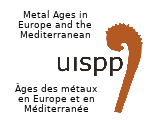The recently discovered site of Oppeano-4D (Verona, Italy) yielded very well-preserved wooden structures dated to the early Middle Bronze Age (MBA1-2, 1650-1450 BCE). Standing walls perfectly defined the interior space of the buildings, which included hearths and finely stratifies layers deriving from daily activities. The importance of the site also derives from its role in the settlement pattern of the northeastern Po Valley between the end of the Early Bronze Age (1750-1650 BCE) and the early MBA. In this period, in fact, the region became gradually populated as part of a process that led to the “Terramare culture”. Despite the importance of this phenomenon, little is known about housing structures, mainly due to the outdated literature that only distinguishes generically between houses "on piles" and "on dry ground". This research thus aims at analysing in-depth selected Bronze Age houses of the region.
Micromorphological analysis on five structures revealed that their internal stratification consisted of trampled herbivore dung alternating with ash derived from the cleaning of the hearths. Ash was probably spread for sanitary purposes and to absorb humidity. This evidence allowed us to interpret these structures as byre-houses, an unknown type of domestic structure in the southern European Bronze Age.
Byre-houses and the abundance of ovicaprid and cattle remains suggest that herding played a primary role in the village economy. Since transhumance is supposed to be carried out from the MBA in the region, to assess whether the site was involved in this strategy, isotopic analysis (δ13C, δ18O) was conducted on ten ovicaprid molar teeth. The results support the hypothesis that the individuals had a highly seasonal diet during the first two years of their life.
This research suggests that more complex interpretative patterns may emerge from multidisciplinary approaches, shedding light on housing structures and their economic significance for the Italian Bronze Age.

 PDF version
PDF version
